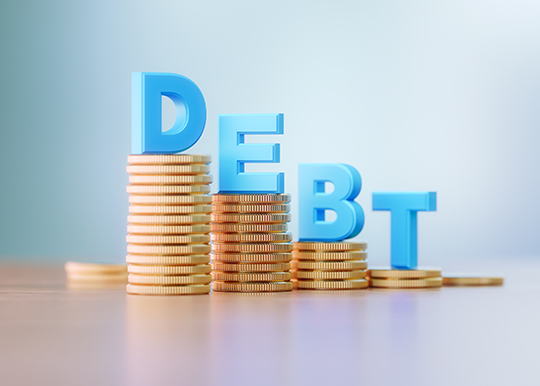Paying Down Debt is Saving

(3 Minute Read) – This article is part of our America Saves Week celebration.
Making the decision to pay down debt can be mixed with emotion. You feel good about choosing to take concrete steps to pay off balances on credit cards, auto loans, student loans or other installment loans. On the other hand, you feel less positive about the amount of money you are directing into a savings account. But reducing debt is actually a form of saving!
Paying Down Debt Opens Up Savings Opportunities
As you pay off your debt you are freeing up money, allowing you to direct those funds toward saving for something else that’s important to you – perhaps an emergency/opportunity fund, a vacation, home purchase, or retirement. This money is freed up as you spend less on interest, and possibly late fees, even lowering the debt balances themselves.
Strategies To Help Pay Down Debt
If you have more than one debt you want to pay off, for example an auto loan and a credit card balance, there are two main strategies to help you decide which debt to pay off first.
- The snowball method focuses on the balances of each loan. In this strategy, you make the minimum payment on all your loans except the one with the smallest balance. With this loan, you put as much money as you can toward it and when it is completely reduced you allocate that money to the next smallest balance. Your confidence gets a boost every time you see an account balance at zero.
- The avalanche method focuses on the interest rates of each loan. In this strategy, you pay the minimum payment on all your loans except the one with the highest interest rate. You apply any remaining money you have for debt repayment to the highest interest rate loan. By paying off the debt with the highest interest rate first you reduce the overall amount of interest you must pay.
You choose which method is right for you and your situation.
Be Smart With Credit
Once you are on a path to reducing your debt, reflect on the type of relationship you have with credit. Credit is a tool. When used wisely and with purpose, credit can help you achieve your financial goals and build financial confidence. Having a clear view on when and for what purpose you use credit is the foundation for a positive relationship.
Sometimes we’re told that there are good types of debt (home mortgage) and bad debt (credit cards). This type of categorization is based only on the financial aspect and not the personal situation you are dealing with. It may feel better to ask yourself if the type of debt you are taking on is a good decision for you or not.
For example, when an emergency expense crops up and it is large enough that it will deplete all or nearly all of your emergency savings, you may feel like you’re on shaky ground if another expense crops up before you can replenish your savings. So, you may weigh this option against using a combination of savings and credit based on what feels best for you in the situation.
Making purposeful choices about credit can help you build more financial confidence.
Resources For Paying Down Debt
You can use the America Saves Spending and Saving Tool to calculate how much you have available for debt repayment, take the America Saves Pledge to plan for this repayment, or listen to the ThinkLikeASaver Podcast for even more tips.
What is America Saves Week?
Since 2007 America Saves Week has been an annual celebration as well as a call to action for everyday Americans to commit to saving successfully. Through the support of thousands of participating organizations, together we encourage individuals to do a financial check-in that allows them to get a clear view of their finances, set savings goals, and create a plan to achieve them.